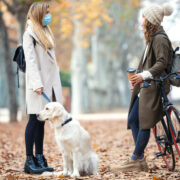Some dogs have a hard time figuring out our puzzles, while other dogs figure them out too quickly! Nina Ottosson’s Tip & Tricks is a series of posts that cover how to make each puzzle game harder for dogs that are quick to solve them, and easier for dogs still getting the hang of it.
How the Dog Twister Works
The Dog Twister is a Level 3 dog puzzle. Place treats or kibble in the compartments underneath the triangular discs and push in the white plastic handles to lock the discs. Your dog will have to pull out the handles to unlock the discs to be able to move the tiles aside to reveal the treats! Place the game on the floor and encourage your dog to seek treats.
Let the games begin!
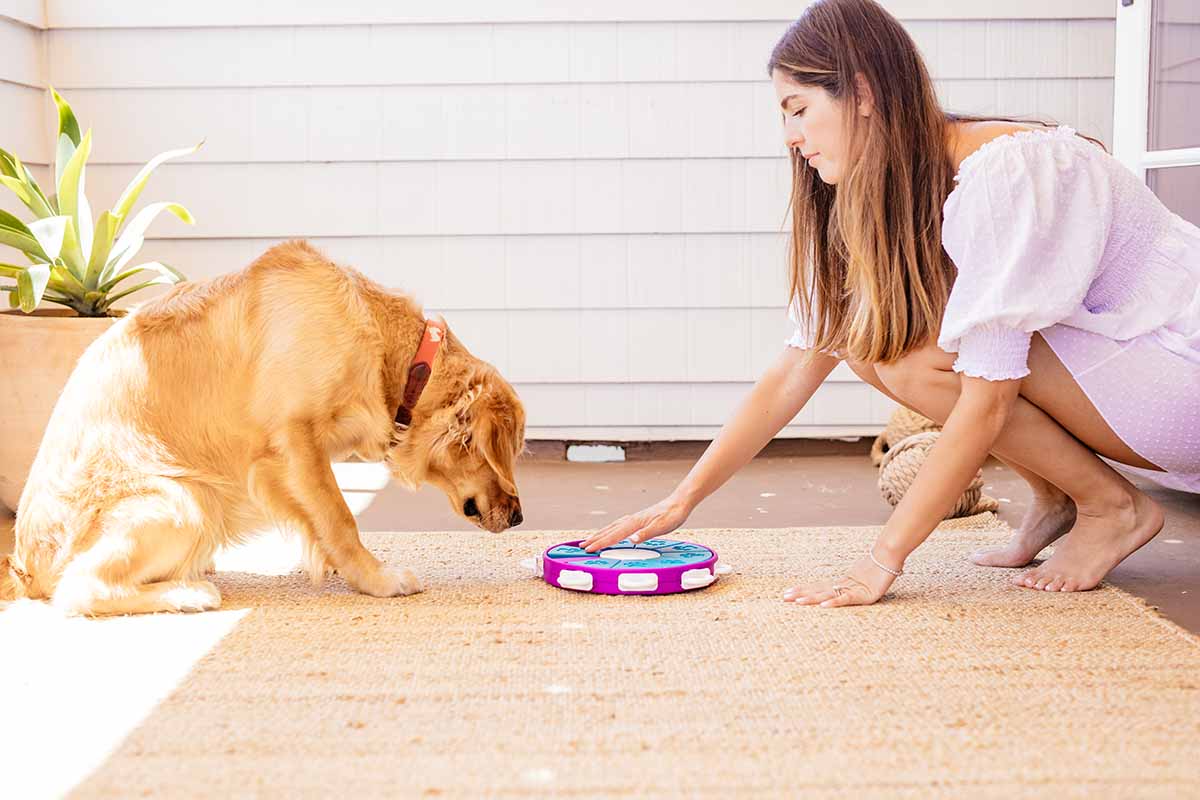
With the following tips & tricks, you can adjust this game to make it both easier and more difficult.
Always start by letting the dog watch you fill the game with treats. I recommend using extra tasty high-value treats the first time the dog plays with a new game.
Start easy – don’t push in the white handles to lock the discs yet. Leave some of the discs a little open for the dog to sense the smell and see the treats.
Play together with the dog, sit next to, and help them understand how the game works.
When the dog understands how to slide the discs, you can start locking one of them with a white handle. If he doesn´t understand, many dogs can see and learn if we show how to pull out the handles and slide the discs to uncover the treats. If the dog understands what “paw” means you can say it and at the same time help the dog pull out one of the white handles to slide the disc.
Making the Dog Twister easier
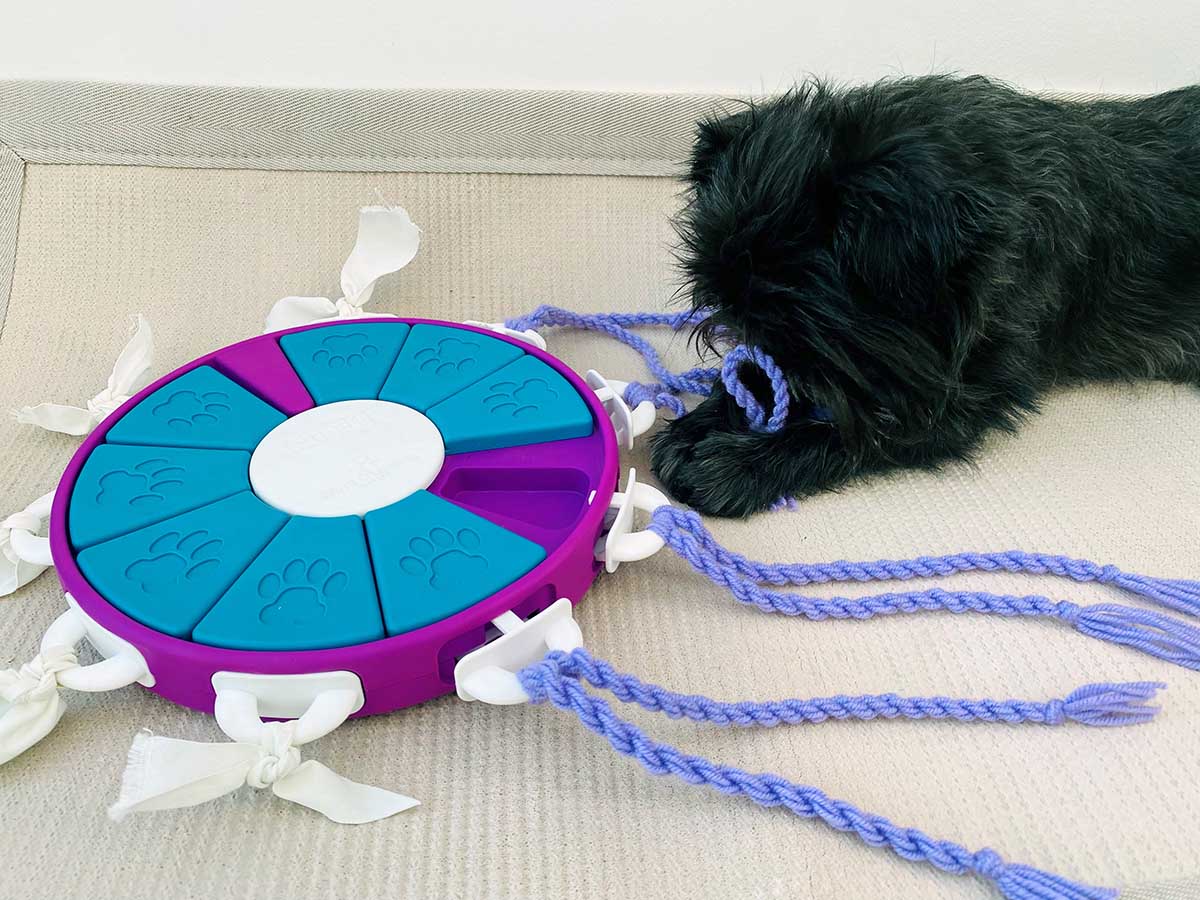
Is your dog a paw or nose dog?
Just as we are right- and left-handed, dogs are paws or nose dogs. Some dogs are both, which sometimes means that nose dogs have a little harder time trying to pull out the white handles with the paw.
If the dog has difficulty pulling out the handles or if you have a nose dog, you can make it a little easier by tying ropes to the handles. This way the dog can pull out the handles with his mouth.
To help the dog understand the connection between disc and handle, you can slide the disc when the dog pulls the handle out with the rope. Repeat several times.
Once the dog has understood how to pull out a handle, you can gradually start locking discs, one by one until all discs are locked.
Make the game more challenging
Method 1: Make a frozen puzzle: place your dog’s favorite snacks with water or natural yogurt in the compartments and let it set in the freezer. A frozen puzzle will keep your dog busy for a much longer time. You can read more about making pupsicles with our puzzles in this blog post.
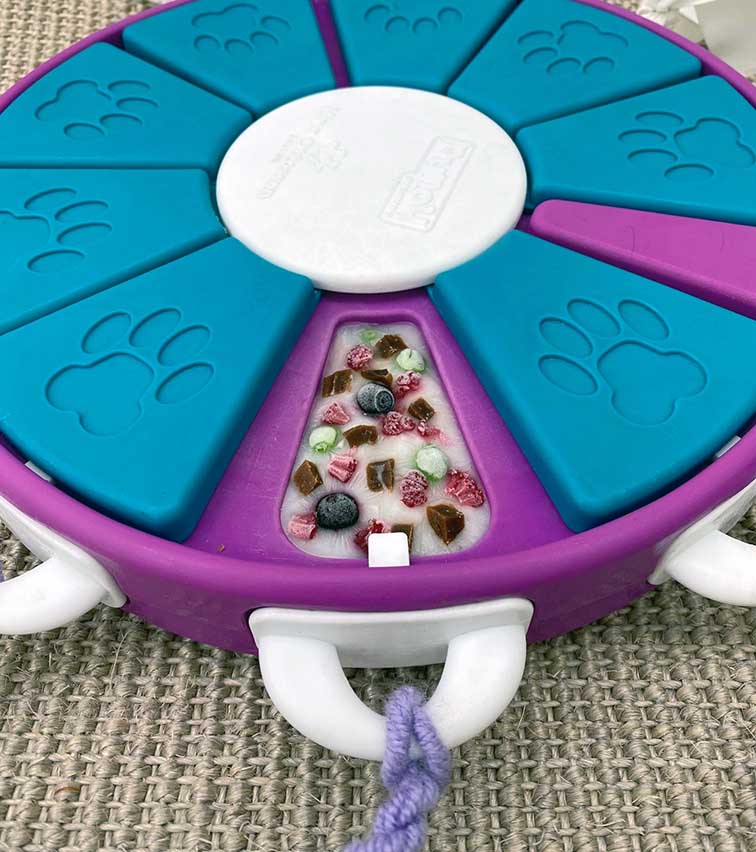
Method 2: Cut out pieces of cardboard and place them over the treats under the discs, adding an extra step to get to the reward. The dog must remove the cardboard to reach the treats.
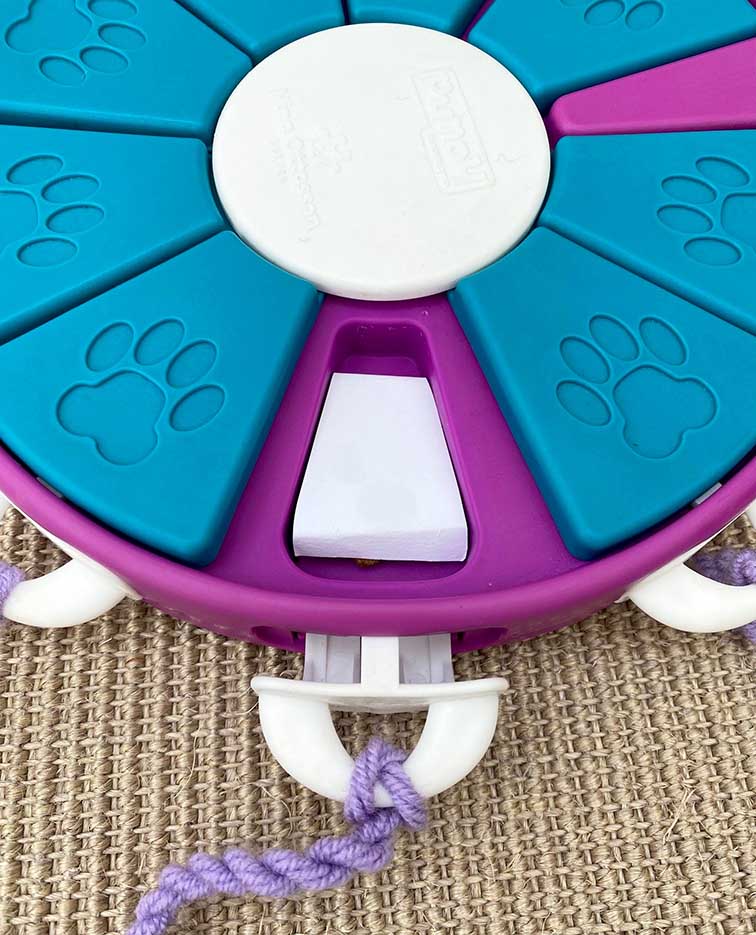
Always supervise your dog. Do not let them ingest cardboard.
Method 3: Place the game higher up, on a stool, box, or chair, which is great for:
- Rough pawing dogs to provide calmer play.
- If you have a pawing dog, it will be a little harder to only work with the nose.
- If your dog is convalescent/recovering from surgery and not allowed to move freely.
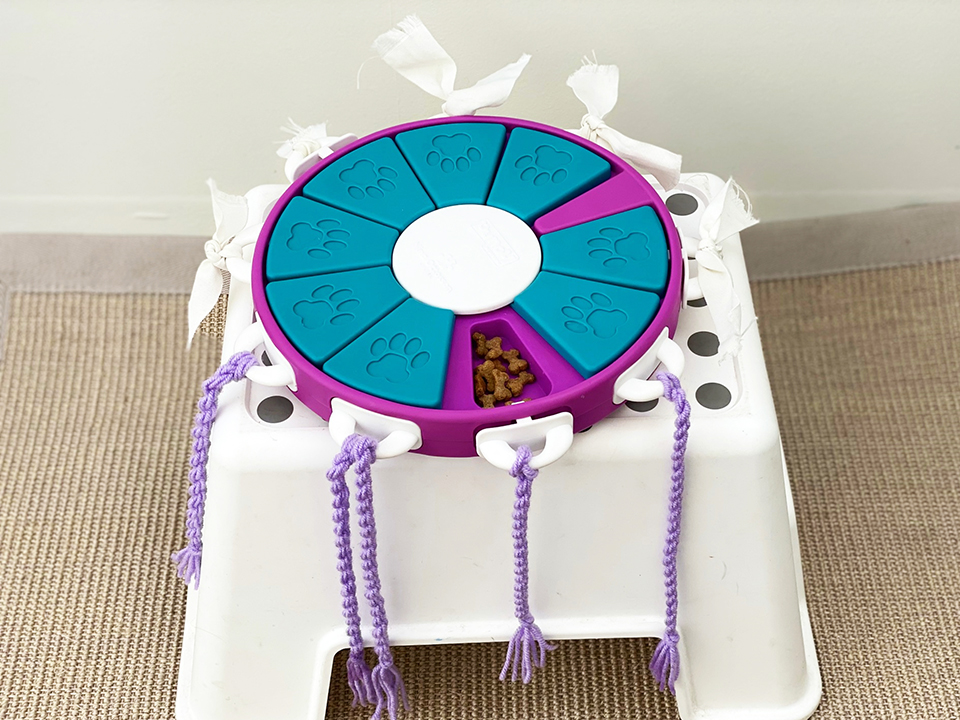
Other Tips & Tricks
Place the game in a soft dog bed: If your dog is a tough or a strong paw player, it allows for calmer play.
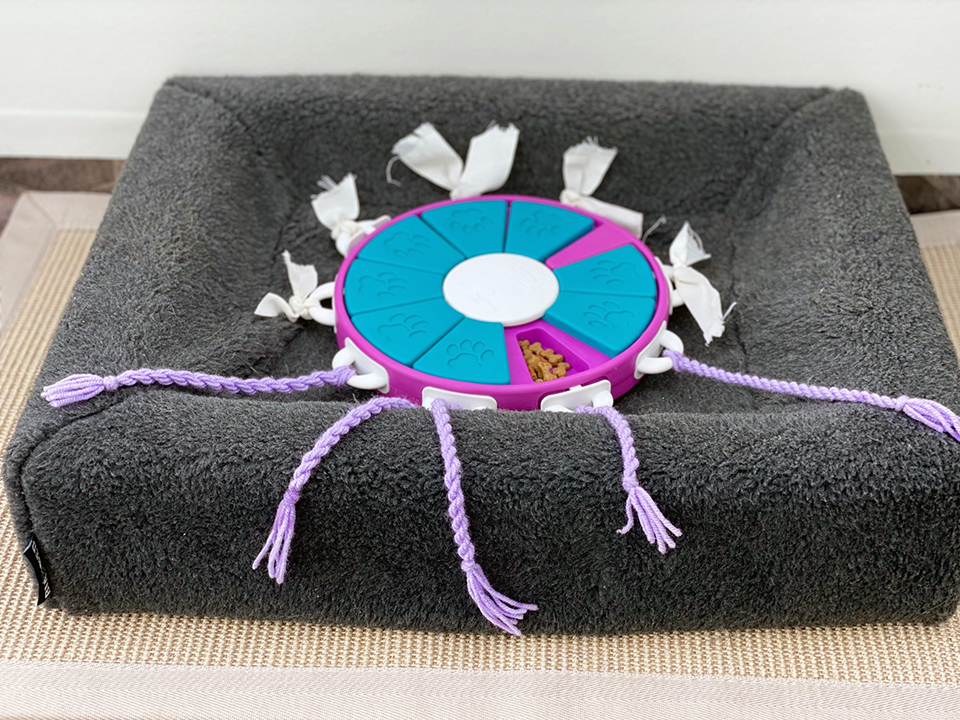
For fast-eating dogs: Use the puzzle as a slow feeder. Serve the dog’s food in the game and let the dog work for the food. The compartments are big enough for a full meal.
Puzzle race: If you have several games, you can make a puzzle race by placing several games in a row, and putting a few treats in each game.
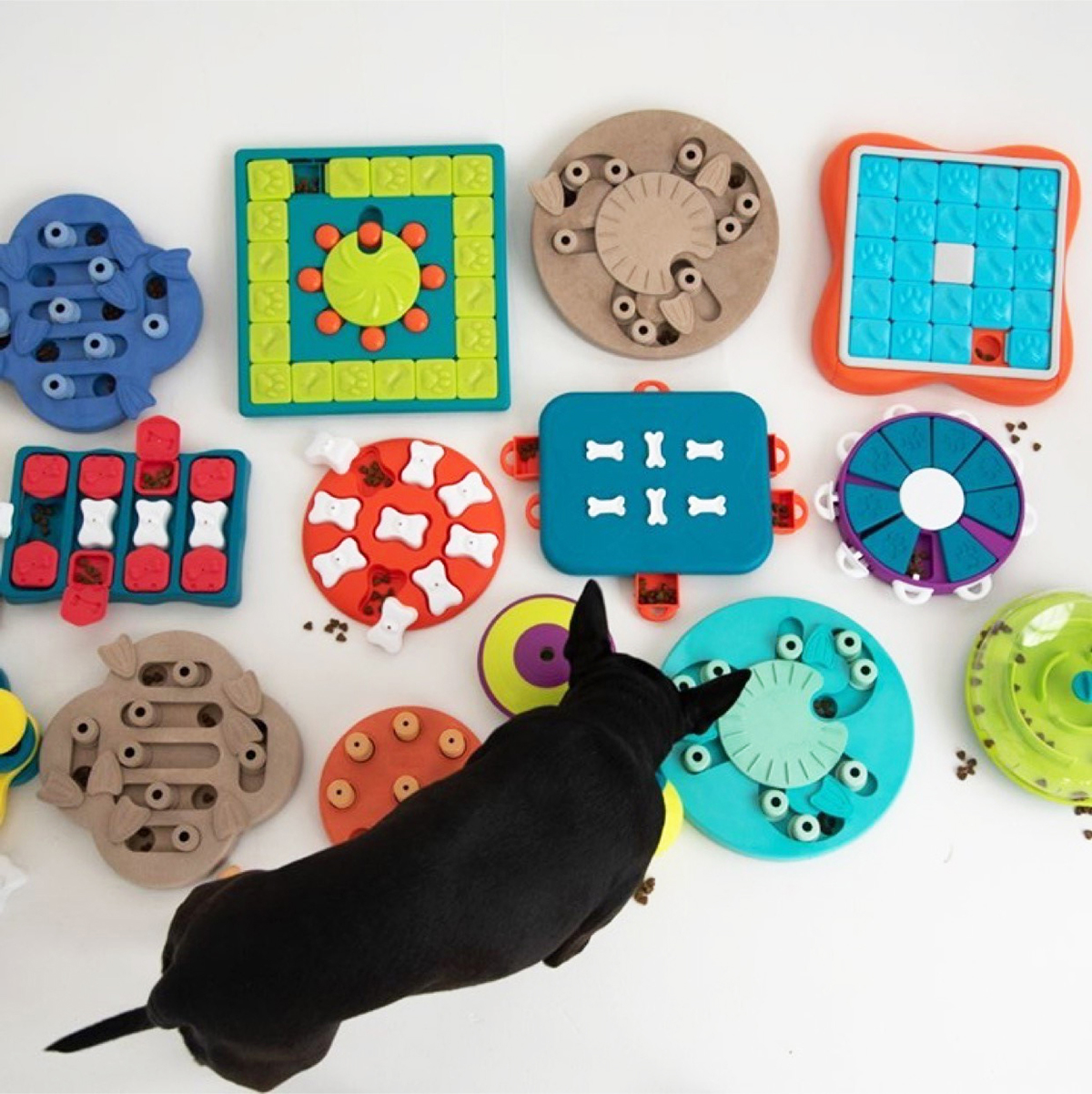
Alternatively, you can hide the games in different rooms or in the garden. Sometimes I hide them under towels and blankets. It’s much appreciated by my dogs, especially on rainy days.
For anxious dogs: Puzzle games can be used to distract dogs in anxious situations such as fireworks, thunderstorms, large gatherings, etc.
For older dogs: The games are great to activate older dogs that are still mentally healthy.
Play together: Playing together with your dog strengthens the bond and builds your relationship with your dog.
Training with dog puzzles
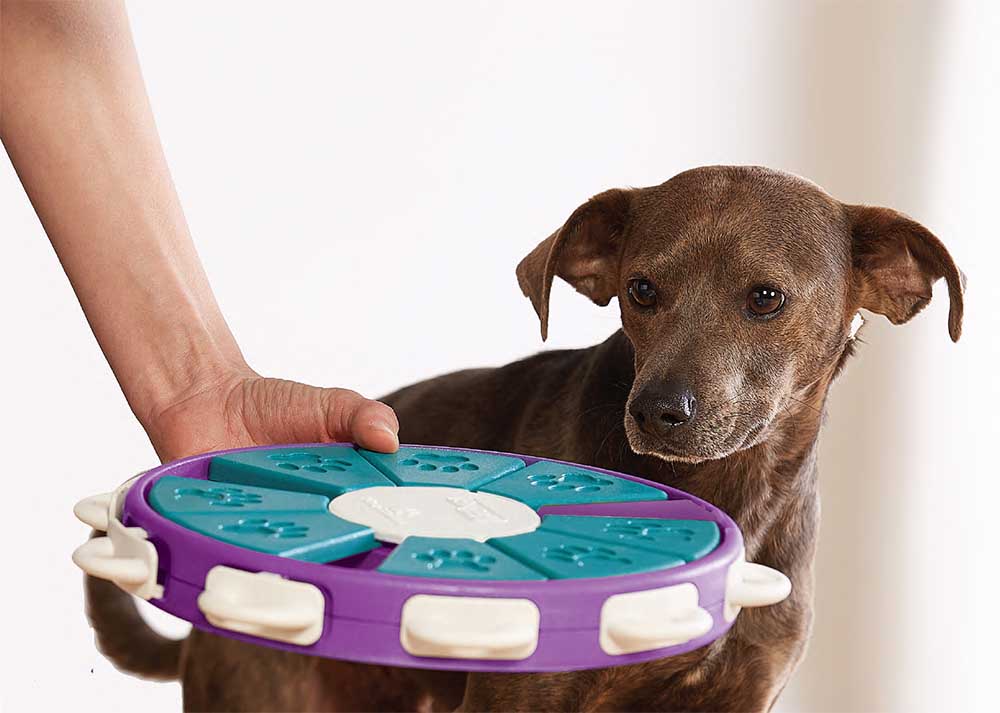
Practice training with your pup using dog puzzles!
When you place the game on the floor, you can try to teach the dog to sit down and wait for you to say “go ahead” or “release.” Dogs learn the usual commands like wait, sit, and go ahead, incredibly fast if doing it in positive forms, and treat puzzles are very positive in a dog’s world.
Playing by the rules
Nina Ottosson dog puzzles are focused on challenging the dog’s brain. These games are not like a regular toy, and they are not indestructible, which is why we also advise close supervision, so the dog plays the right way, especially until you know how your dog works with the games. Then you can make your own decision on how you want your dog to use the games.
Playing with puzzle games is fun! Dogs love to work for food & treats, and because of that, it´s very important to supervise, especially with puppies and young dogs.
It´s important to teach the dog the rules. Don’t let the dog chew on the puzzle or turn it upside down. As soon as this starts happening, you need to stop the play.
Safety & Care
When choosing a toy, make sure to choose an appropriate size/style/level for your dog. No toy or game is indestructible. ALWAYS supervise your dog closely, teach your dog how the game works. Do not leave the dog alone with a treat game, do not let the dog chew on the game or pieces. Inspect regularly for damage and remove if broken, or if parts become separated, as serious injury may result. For dogs only, not a children’s toy. When empty, store until next supervised use.
Cleaning the Dog Twister
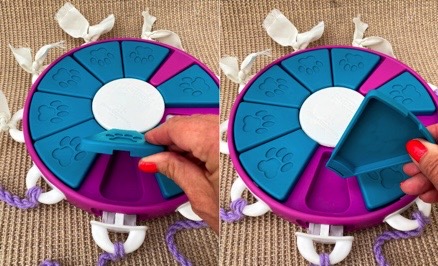
The discs snap on and off for easy cleaning. Soak the game in warm water and soap, then clean the game with a sponge. I use a sponge and a spray bottle that I mixed with soap and water.
Do you have a question for Nina about dog games? Let us know in the comments!
